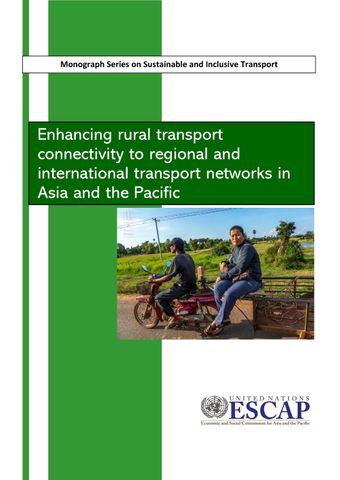- Home
- Books
- Enhancing Rural Transport Connectivity to Regional and International Transport Networks in Asia and the Pacific
- Chapter
Rural infrastructure connectivity policies

- Author: United Nations
- Main Title: Enhancing Rural Transport Connectivity to Regional and International Transport Networks in Asia and the Pacific , pp 26-38
- Publication Date: March 2020
- DOI: https://doi.org/10.18356/2cfda490-en
- Language: English
The target of rural transport policies in most developing countries is infrastructure development. The emphasis of rural infrastructure development policies has evolved over time, with a shift from large-scale road construction programmes in the 1950s and 60s, to integrated rural development approaches in the 1970s and 80s, to more targeted road development projects in the 1990s. In line with governance trends in the 1990s, many countries began to systematically decentralize part of their infrastructure budgets to local governments. In response, countries started to adopt the Integrated Rural Accessibility Planning (IRAP) tool developed by the International Labour Organisation, which emphasized a more participatory approach to rural infrastructure development which reflected local people’s priorities as much as the governments (see, for example, Nepal’s experiences in Donnges, Ojha and Pearse, 2005). The 2000s saw a return to large-scale, national government-driven rural road programmes, such as the Pradhan Mantri Gran Sadak Yojana (PMGSY) programme in India.
-
From This Site
/content/books/9789210048330c007dcterms_title,dcterms_subject,pub_keyword-contentType:Journal -contentType:Contributor -contentType:Concept -contentType:Institution105

